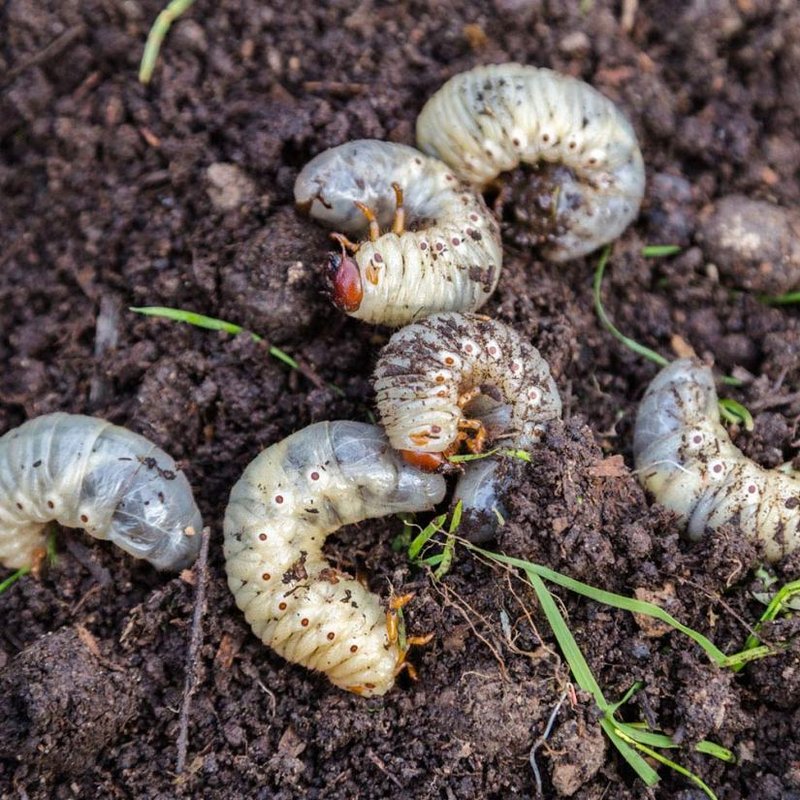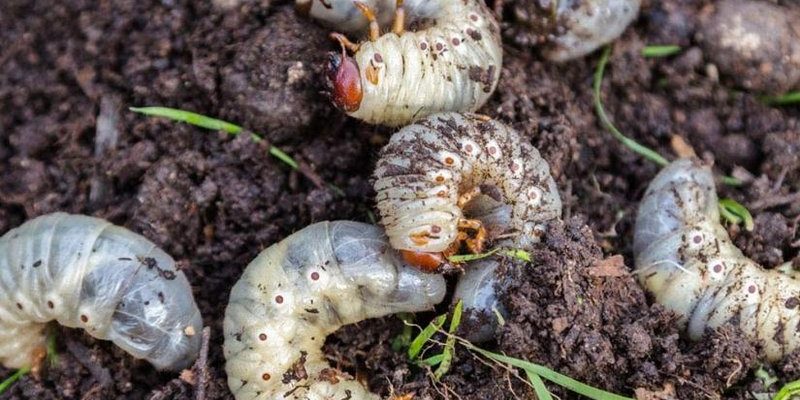
Grub worms are actually the larval stage of several different types of beetles, most notably Japanese beetles and June bugs. While they might seem innocuous at first glance, these tiny pests can wreak havoc beneath the surface of your lawn. Understanding who these little creatures are, how they operate, and how to manage them is key to restoring and maintaining a healthy lawn. So grab your coffee, and let’s dig into the world of grub worms!
What Exactly Are Grub Worms?
Grub worms, or simply “grubs,” are the larvae of scarab beetles. You might be wondering what a larva is—think of it as a baby beetle that’s still figuring out its life. They usually have a soft, C-shaped body that’s white or cream in color, with a brown head. Depending on the species and the environment, they can grow to about an inch long. While they’re busy growing underground, they feast on the tender roots of your grass plants, much like a child devouring candy—quickly and without remorse.
While there are many types of grub worms, the most common culprits in North American lawns include the Japanese beetle, June bug, and the masked chafers. Each species has its own life cycle and feeding habits. However, they all share a common trait: they love to chomp on grass roots, which can lead to yellowing and patchy areas in your lawn. If these grub worms stick around too long, they can cause extensive damage, making it essential to recognize the signs early.
Signs of Grub Worm Infestation
So, how do you know if you have a grub worm problem? Unfortunately, these pests usually hang out beneath the soil, making them hard to spot. But there are some telltale signs you can look for.
– Yellow Patches: One of the first things you’ll notice is those brown or yellow patches on your lawn. If the grass is dry and pulling up easily, it’s a strong indicator that the roots may have been nibbled on by grubs.
– Increased Animal Activity: If you notice more birds, raccoons, or even skunks in your yard, they might have come for a grub feast. These animals can be quite adept at detecting grubs beneath the surface, and they’ll dig to get to them.
– Lifting Turf: If you gently pull on sections of your lawn, a healthy area will resist. But if it lifts easily, it’s often a sign of grubs feasting below. Their damage can make the grass feel spongy.
Essentially, if your lawn seems off, it might be time to investigate further for these pesky invaders. Catching the problem early is crucial to keeping your lawn healthy and vigorous.
Life Cycle of Grub Worms
Understanding the life cycle of grub worms can help you anticipate when to be vigilant. Their journey begins in the summer months, when adult beetles emerge to mate and lay eggs. So picture this: it’s a warm July evening, and these beetles are out and about, seeking the perfect spot to lay their eggs in the soil.
Once the eggs hatch—usually in late summer to early fall—the tiny grubs emerge and start digging into your lawn, munching on those delicious roots. They’ll spend the fall and winter months feeding before burrowing deeper into the soil to survive the cold weather. When spring comes around, they’ll be back on the move, hungry and ready to do more damage as they prepare to morph into adult beetles.
This cyclical pattern is essential to understand for effective management. Knowing when they’re most active helps you decide the best time to treat your yard.
How to Control Grub Worm Populations
If you’ve confirmed that grubs are dining on your lawn, don’t panic! There are several strategies you can implement to regain control.
1. Natural Predators: One of the simplest ways to tackle grub worms is to invite their natural predators into your yard. Birds, beneficial nematodes, and even certain types of beetles can help keep their numbers in check. This is an eco-friendly way to maintain balance without resorting to chemicals.
2. Pesticides: If the infestation is severe, you may need to turn to pesticides. Look for products specifically designed for grubs and follow the application instructions carefully. Timing is crucial here; the best time to apply these is usually in late summer or early fall, just as the grubs are emerging.
3. Healthy Lawn Practices: Maintaining a healthy lawn through proper watering, mowing, and fertilizing can help your grass recover from grub damage and stress. Strong, well-nourished grass is more resilient and can outgrow the damage caused by grubs.
It’s all about being proactive! If you act quickly, you can prevent a small problem from turning into a big headache.
Preventing Grub Worm Infestations
Prevention is often easier than dealing with an infestation after it happens. Here are some practical steps you can take to help your lawn stay grub-free.
– Regular Lawn Maintenance: A well-cared-for lawn is less attractive to beetles looking to lay eggs. Keep up with mowing and aerating, as this helps promote healthy growth and reduces thatch.
– Monitor Beetle Activity: Keep an eye out for adult beetles in your yard. If you spot them, it might be time to take action before they lay eggs. You can even trap them to reduce their numbers.
– Soil Testing: Testing your soil can help identify issues that might attract grubs. Healthy soil promotes vigorous grass growth, making it less likely your lawn will become a grub buffet.
Staying ahead of the game and implementing these preventive measures can save you from the hassle of dealing with grubs later on.
Grub worms may be small, but their impact on your lawn can be significant. By understanding what they are, identifying the signs of an infestation, and knowing how to manage and prevent them, you can maintain a beautiful lawn that you can truly enjoy. Healthy grass is like a warm hug for your home—it not only looks good but feels great underfoot!
Remember, a little vigilance goes a long way. Keep an eye on your lawn, take action when necessary, and you’ll be well on your way to keeping those pesky grub worms at bay. Happy gardening!

